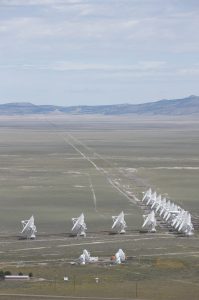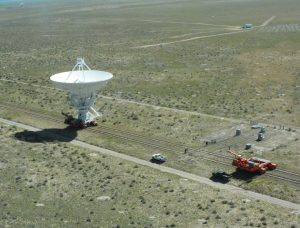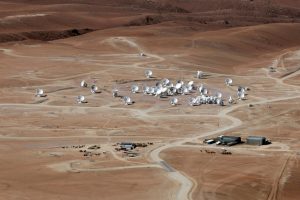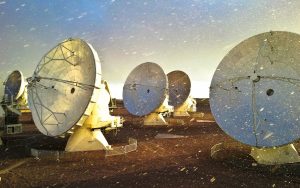Flying over the Very Large Array in New Mexico when the ALMA Test Facility had not yet been dismantled. In the foreground sit two 12-meter prototype antennas, while the giant dishes of the VLA are hard at work behind them.


ALMA Test Facility and the VLA
When this aerial shot of the Very Large Array was taken, the ALMA Test Facility was still in place. The smaller dishes in the foreground are two prototype antennas for ALMA.

Ease on Down the Road
On a schedule that runs throughout the year, the 27 antennas of the Very Large Array in New Mexico ride the red Antenna Transporters to new pads in the array. The VLA Safety crew keeps a close watch on the move.

ALMA Nears Completion
In this photo taken from a neighboring extinct volcano, the Atacama Large Millimeter/submillimeter Array is nearly complete. Here, at 16,500 feet up in the Chilean Andes, 66 of the most complex radio telescopes on Earth will combine their radio views for the first time in late 2013. In this photo from December 2012, the array has 48 antennas.

Stormy Sunset Over ALMA
A break in the clouds during a snowstorm creates a dramatic scene at the Atacama Large Millimeter/submillimeter Array in northern Chile.

Snowstorm at ALMA
At 16,500 feet in the Chilean Andes, ALMA experiences some extreme weather conditions. They don’t last long, but they blow through in a fury. The benefits of the dry, high site outweigh the occasional storms, and engineers made sure that all models of the antennas were covered in carbon fiber armor to withstand the Atacama’s fierce environment.





